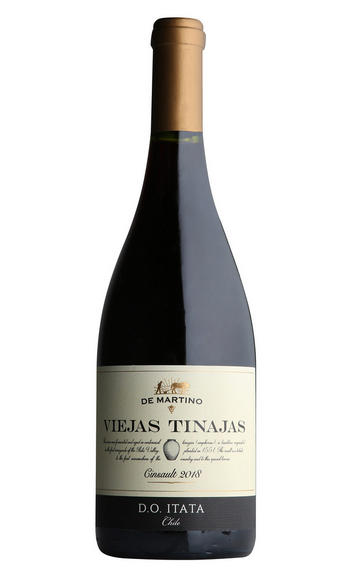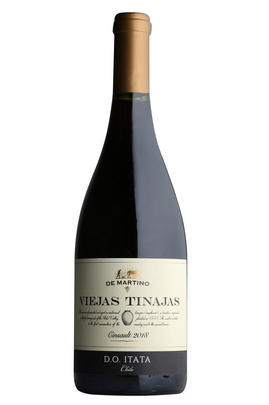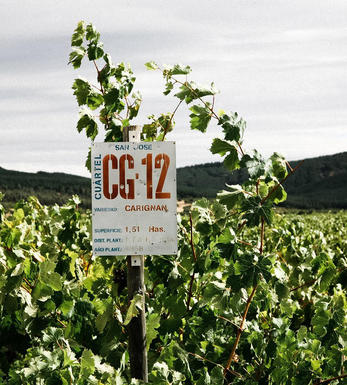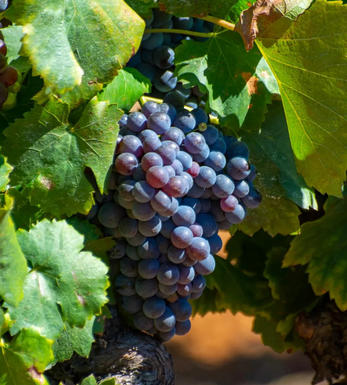
2018 De Martino, Viejas Tinajas Cinsault, Itata Valley, Chile

Critics reviews
Luis Gutirrez - 31/10/2018
About this WINE

De Martino
De Martino is one of the most progressive and exciting names on the Chilean wine scene, deservedly named Chilean Winery of the year in 2011. Through a network of intellectual partnerships and vineyard acquisition, it has quickly built up a reputation for organic viticulture of the highest quality, farming from over 350 different vineyards.
The corporate vision focuses on sustainability, terroir, and, by logical extension, excellence. By concentrating on the very best sites for the varieties in question, be they in Limari, Elqui or Maipo, and by the development of a world class winemaking team, De Martino now sits at the very top of the Chilean vinous hierarchy.
The Alto Piedras vineyards make up 5 hectares of the sub-Denominacion of the Isla de Maipo, a de facto island as the vines are surrounded by two branches of the Maipo River. Two other self-evident truths are located in the nomenclature; firstly that the terrain is rocky, volcanic gravel to be precise and secondly that the vines are quite high up. Chile’s indigenous grape, Carmenère, is here aged for 18 months in new French oak.

Cinsault
Cinsault (pronounced "sin-so") is a red grape variety known for its versatility and contributions to various wine regions worldwide. It has a rich history, primarily in the Languedoc region of southern France, but it has spread to many other wine-producing areas due to its adaptability to different climates.
Cinsault grapes are medium-sized with thin skins, typically dark blue to black in colour. The vines are hardy and drought-resistant grapevine, making them suitable for warm and arid climates. They are particularly well-suited to Mediterranean regions and thrive in areas with hot summers.
While Cinsault is mainly used in red wine production, it is also sometimes used in rosé wines, adding light and fruity character. It is often blended with other grape varieties to enhance the wine profile.
The variety tends to exhibit a range of flavours, including red berries, cherries, and sometimes a hint of spices. When used in rosé wines, it can bring out more floral and watermelon notes.
Tannins are typically on the lower side, which can make them more approachable and enjoyable in their youth. The variety is often used in blends to soften and round out more tannic grape varieties.
Cinsault has been a key component in traditional blends in southern France, such as in Châteauneuf-du-Pape wines. Over time, it has gained popularity in other wine regions as winemakers recognize its potential for producing high-quality wines.


Buying options
Add to wishlist
Description
The amphorae-fermented Cinsault sells like hotcakes, so I had to taste an unbottled sample of the 2018 Viejas Tinajas Cinsault, a wine first produced in 2011. 2018 was a cold and rainy year, and they harvested early, as rains complicated matters in mid-March. The wine is 11.7% alcohol and has moderate acidity, a characteristic of the grape. Sourced from dry-farmed vines planted in Guarilige 33 years ago, the uncrushed grapes ferment in a carbonic maceration way in the terracotta amphorae for 15 days; the wine is kept in the amphorae through the winter and then is bottled unfiltered once malolactic fermentation has completed. This was not bottled in 2017, as the wine was strongly marked by the smoke from the fires that happened that year. The old amphorae seem to be more neutral after a few years, and the wines are not marked like they were in 2011. This is precise, expressive and fresh, with a wild character, very different from the other Cinsaults. It has a brothy, meaty touch on the palate that makes it very tasty. Clean and precise, with very good grip, 2018 has to be the finest vintage to date for this wine. They expect to fill some 12,100 bottles in September 2018.
Luis Gutirrez - 31/10/2018
wine at a glance
Delivery and quality guarantee